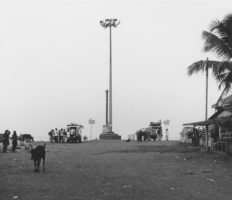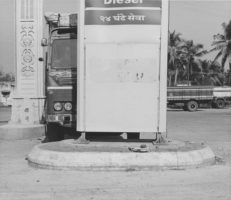We are all fairly familiar with stereotypes that are associated with countries (find a lot of them mapped here). We appear to be way less aware of the the kinds of narratives created by the media, narratives that often are supported by carefully cherry-picked facts and in actuality are little more than, well, stereotypes. For example, the media love to call economically booming countries “tigers,” to first create incredible hype about how well some country is doing and to then – and I’m tempted to say inevitably, since so many of those booms are based on financial bubbles – write about how the former tiger are then forced to deal with reality (click here for an example – note how it’s always “their” bankers who brought the disaster).
India is one of those countries that comes with a lot of those narratives attached. They’re not just economic, of course, there also is the country itself, its dazzling diversity and culture. As a consequence, a lot of photography made around India tends to focus on very few things. In the introduction of Massimo Sordi‘s Changing India, the photographer speaks of the Delhi-Mumbai Industrial Corridor Project, one of those projects intended at developing some major industrial zone. I suppose that’s interesting in some way, but I find it quite a bit less interesting than the photographs themselves.






I think photographically, these images run counter a lot of expectations. And many of them are visually complex in a deceiving manner: At first sight, they appear to be simple. But when the viewer starts to look more carefully, they reveal additional layers. Looking through them, I quickly forgot about the Delhi-Mumbai Industrial Corridor Project, instead finding this very interesting view of India (or at least a part of it) that often had me try to figure out what I was looking at.
I’m left with more questions than answers, which is something I enjoy tremendously. It’s nice to have answers, but all too often there aren’t any easy or obvious answers. And the medium photography is surprisingly well suited to play this game: It pretends to give answers by showing something that was in front of a camera, but really just asks more questions.
